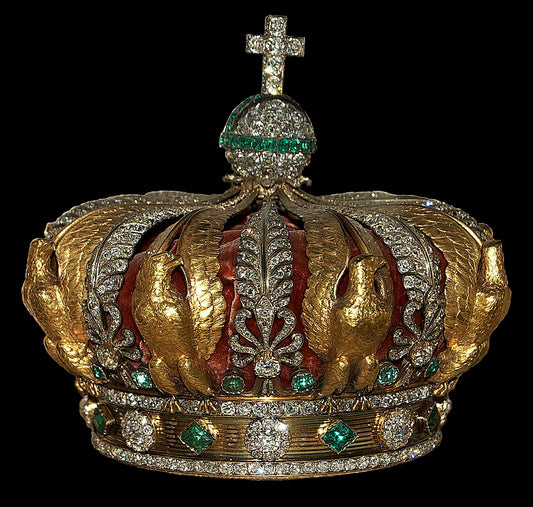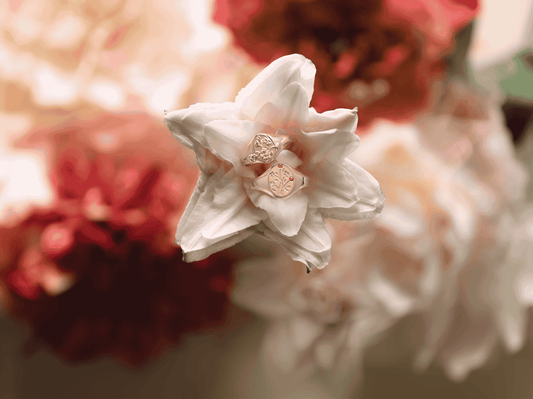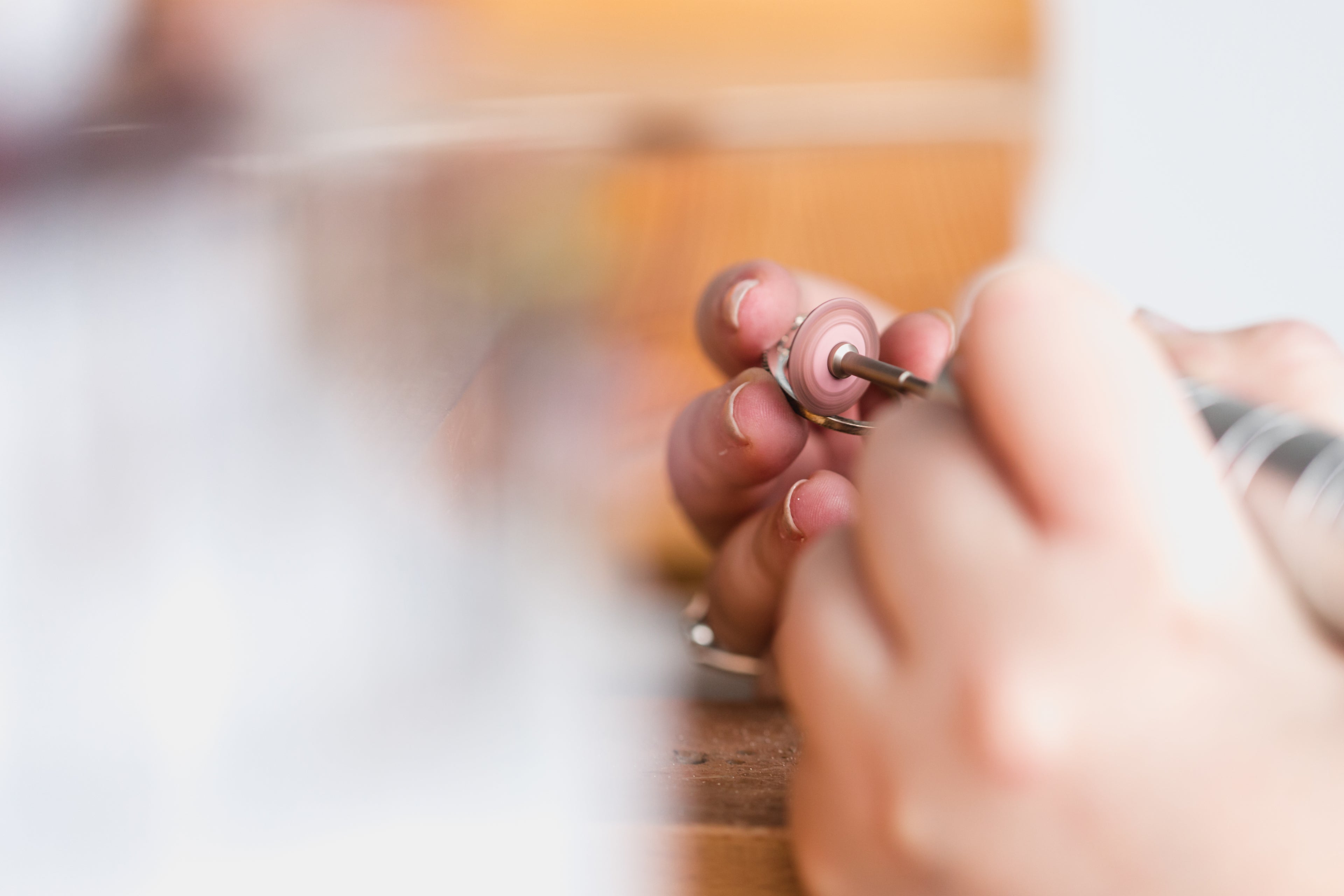The Calling Beneath the Craft
People often think of jewelers as artists or technicians—and we are—but I’m not sure that’s the whole story. I’ve thought a lot about what it means to have a calling, and I know not everyone is gifted in life with that opportunity. I’m lucky to have found mine and to be privileged enough not just to know what it is, but also to be able to translate that calling into my life’s work. What I do as a jeweler feels less like being an engineer of small accessories and more like being a witness to the lives of the people whose jewelry I create.
Why do I feel so confident in saying that? It’s simple: jewelry speaks to our need for connection and longevity. It's designed to outlast us. Jewelry isn’t just something we wear and forget. In fact, sometimes it’s one of the very last things we wear—and the first to be passed down. It’s a legacy in physical form. That makes a jeweler more than a mechanic. We become keepers of stories. Translators of memory into metal.
Designing for the Life Lived
I’ve been through a lot in my life. I know what it’s like to grieve losses, to rebuild, to carry a heartache that heals but surprises you with its weight years later. I’m old friends with hard times, and I also know how joyful it can be to rediscover yourself after a long season of darkness.
That’s why I design the way I do. I don’t just make things to be worn—I make them to be felt. My clients come to me with stories, not just specs. And because I’ve walked through plenty of fire in my own life, I’m not afraid to meet them in theirs. If someone is struggling with grief, or fear, or transition, I honor that. If they’re celebrating, I lean into that too. Whatever they're carrying, I do my best to make space for it.
Jewelry can’t fix what’s been broken. But it can hold meaning. It can mark a turning point. It can say, “I made it through this,” or “I remember you,” or “this is who I am now.” That’s what drives me. That’s what it means to design with intention and integrity.
Listening Is a Design Skill
I have learned so much about design just by listening carefully to my clients. It’s easy, in our human arrogance, to assume that we are the “experts” because we have the experience (and I’m not saying I don’t sometimes say no or gently suggest an alternative style might be a better option). But it’s so important to listen before we decide we know what a person needs.
That’s one of the reasons I ask so many questions during our consultations (I have a whole checklist! It’s extensive! Overkill, really!). But I don’t want to risk missing any tiny details, especially because I’ve discovered over the years that tiny things come to the surface—stories about how a client met her husband or why sparrows were so important to her. If I hadn’t been listening, these clients would have walked away with jewelry that was nice, but flat. Instead, they have pieces that make their hearts sing.
Redesigns, Restorations, and Respect
The same goes for redesigns and restorations. If we only ever do what we think is best, without listening to the whole story first, we miss so many opportunities to honor the history behind a piece.
It’s so important to respect the work and care that went into the original piece (hello, jewelers of yesteryear, I see you), all the love that has been poured into it over the years (imagine every time your grandmother put on her earrings and smiled at her reflection in the mirror), and also to honor the story the client wishes to tell.
Are we reaching back to reclaim something sorrowful? Are we stepping boldly into the future and carrying our people with us? Each time I speak with someone new, I remember they are coming to me with their own story, and each story needs to be told in a unique way.
Meeting People Where They Are
Even though I’m usually good at seeing things from alternate perspectives, this work can still push my creativity, empathy, and flexibility to their limits. I wish I could say there was a trick to it, but it’s really just meeting people where they are, then digging deep into my own thought patterns—sometimes challenging them—to understand better.
One example is a client who was healing from a brutal divorce. She wanted to use the jewelry her ex-husband had given her to create a new piece. We worked together for months, and it was an honor to witness the way she handled her growth and healing through that process. I honestly don’t think I could have done it if I had been in her position, but she met the work with so much grace and strength. Together, we designed a piece that she now wears as a symbol that she survived something most people would consider unsurvivable.
Knowing When to Say No
Sometimes it’s just as important to listen for the reasons not to create something.
When someone has lost a loved one very recently and is still in the earliest stages of grief, they’ll sometimes come to me with a box of their mother’s jewelry and want to melt it all down—or even ask where to sell it. I know these transitions can be exhausting, financially difficult, and emotionally chaotic. But I always try to counsel patience when it comes to heirlooms. I would hate to be the source of regret about someone’s memories.
I also decline projects if the design would compromise a piece’s structural integrity, or if it feels like it’s being made out of spite rather than reclamation. I believe in putting positive energy into the world, and I prefer to make pieces that reflect that.
The Sacred Act of Repair
Something I find just as sacred as creating a new design is repairing something old that has been broken. People who know me well know that I have a soft spot for broken things—broken hearts, broken furniture, broken people.
My house looks like a museum filled with every manner of object I’ve dragged home from a thrift store or antique pile.
For me, repairing and restoring jewelry is about respecting the story that already exists, so that it can be told to future generations. These pieces matter. They prove that we lived, we walked here, we left our mark. That our stories mattered.
Designing for the Milestones That Matter
Intentional design can be a transformative experience, both for me and for my clients. When a client came to me for a ring to celebrate thirty years of sobriety, I knew this was just a stop along his journey—but it was still a moment worth marking.
He had worked hard to reach that milestone, and when he picked up the finished piece, he cried, I cried, my staff cried—we all cried.
Some things are just worth crying over.
Those tears are recognition that there was an alternate path he could have taken. That moment was a defiant, joyful reminder: there but for the grace of God.
The Agony and the Ecstasy of Design
Something else that’s never simple is getting it right. It doesn’t matter that I’ve done this a thousand times. I will still agonize over every detail of your design. I’ll complain to my entire staff, my best friend, my husband. I’ll say it’s not working. That I’m not cut out for this. That you’re going to hate it.
And then—usually at 3am the night before it’s due—everything comes together. Something in the design clicks, I’m blessed by whatever muses hang out near forges and dust-covered workshops, and suddenly, it’s beautiful.
It happens this way every. single. time.
Jewelry as Witness, as Legacy
Designing jewelry has taught me so much about people, about the human experience, and about the ways we connect with each other—beyond just shape, color, size, or style.
It’s taught me how much emotion influences the things we love, and how those things can anchor us to a moment in time, a person we love, or a dream of the future.
I’ll never be convinced that jewelry is simply a product to be bought and sold.
Designing it, wearing it, loving it, stewarding it while we’re here, and passing it on—that is a process and a privilege. It’s a conversation with history and with those who came before us and will come after.
Witnessing is never easy. It’s something I take seriously, and I hope that reflects in my work. I hope I’m helping others leave their mark on the weave of history—to strengthen the silver and golden cords that connect us all.
I hope I’m creating beauty that will be held and worn for centuries, long after I, too, am just a story.
An Invitation to You
Have you been holding on to a piece of jewelry and you’re not sure what to do with it?
My bench is ready. Get in touch today, and let’s make something together.









